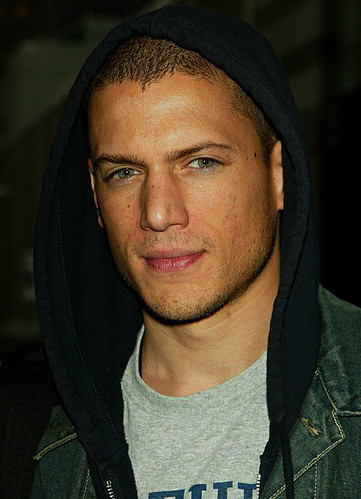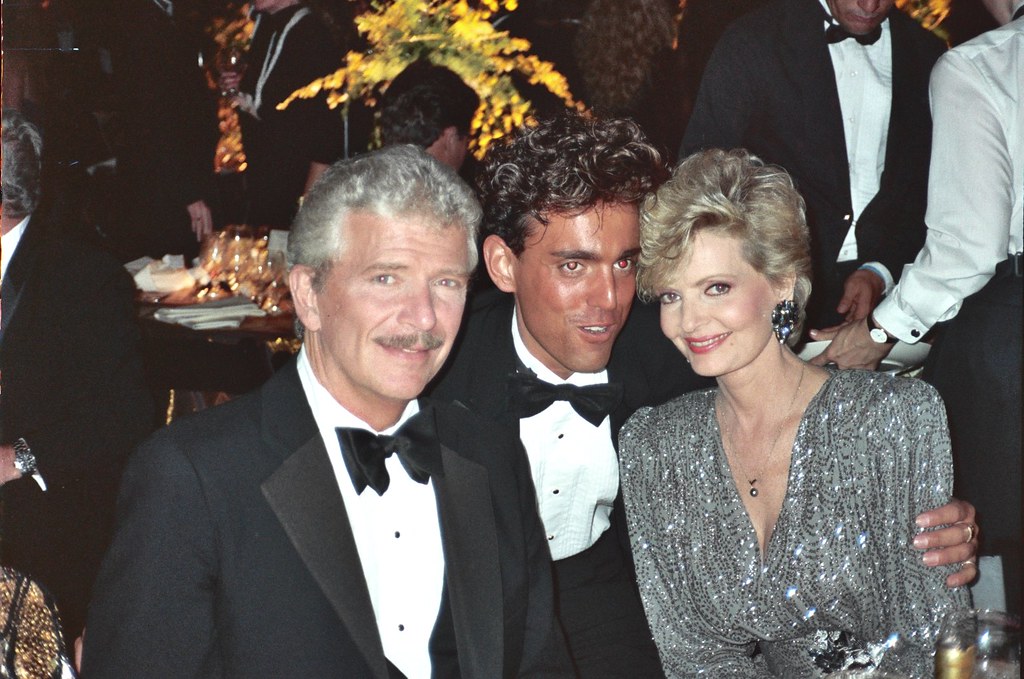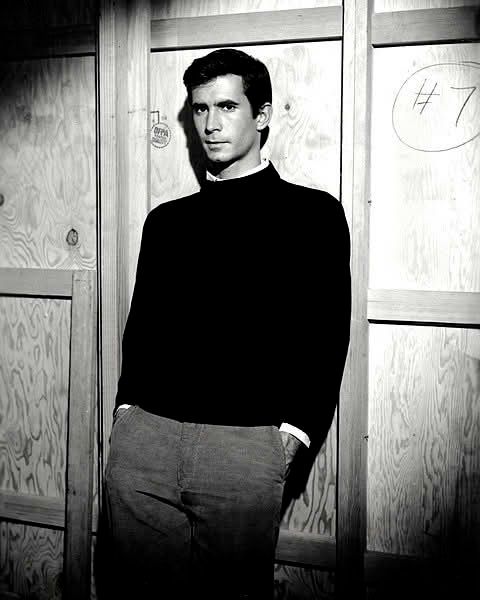
The entertainment industry, a vibrant tapestry woven with the talents of countless individuals, has long served as a mirror reflecting society’s joys, struggles, and triumphs. Within this dynamic landscape, a generation of artists, visionaries, and performers made indelible marks, captivating audiences worldwide with their unique gifts. However, as the 20th century progressed, a silent and insidious epidemic began to cast a long shadow, tragically cutting short the lives and careers of many brilliant individuals, particularly within the LGBTQ+ community.
World AIDS Day serves as a poignant annual reminder of the devastating toll HIV and AIDS have taken globally, commemorating the millions lost and galvanizing efforts to combat discrimination and find cures. This in-depth feature takes a solemn yet celebratory journey to remember some of the most prominent gay actors, musicians, and artists who, despite achieving immense professional success, ultimately succumbed to AIDS-related illnesses, their legacies continuing to resonate through their work.

1. **Freddie Mercury**As the impossibly sexy and charismatic frontman of British rock band Queen, Freddie Mercury helped sell over 300 million records worldwide, with hits including “Bohemian Rhapsody” and “Radio Gaga.” His unparalleled vocal range, dynamic stage presence, and songwriting prowess cemented his status as one of rock music’s most iconic figures, captivating audiences with his flamboyant performances and theatrical flair.
Despite his numerous, widely-reported relationships with men and women, Freddie rarely addressed his sexuality publicly. Instead, he playfully alluded to his queerness with his flamboyant, high-camp stage antics, not to mention looking fabulous in a PVC miniskirt in the video for ‘I Want To Break Free’. This ambiguity only added to his star power, allowing his extraordinary talent to take center stage without being confined by labels.
Freddie lost his life to AIDS-related causes on November 24, 1991, at the age of 45, shortly after making his condition public. His untimely death marked a crucial turning point in the public’s perception of the disease, humanizing it for millions. In his memory, Freddie’s bandmates established the AIDS charity Mercury Phoenix Trust, which continues to fund global initiatives in the fight against HIV and AIDS.
Read more about: The Lies Behind the Oscars: 10 Academy Award Winners Whose Public and Private Lives Don’t Align

2. **Howard Ashman**The lyricist behind some of Disney’s best-loved tunes, from *The Little Mermaid’s* ‘Part of That World’ to *Aladdin’s* ‘Friend Like Me’, Howard Ashman was a pivotal figure in the Disney Renaissance. He is widely credited with helping usher in a new era of animation, weaving profound character and narrative depth into song lyrics that breathed new life into classic tales.
Ashman was also one of the few openly gay men in showbiz in the 70s and 80s, a testament to his courage in an era where such openness was rare. His influence extended far beyond the words he penned, bringing a distinctive vision and uncompromising artistic integrity to his work. He ensured each song served the story and resonated deeply with audiences of all ages.
After the pain of watching two ex-boyfriends lose their lives to the disease, Ashman died of AIDS-related causes on March 17, 1991, at the age of 40. Poignantly, he was writing the lyrics for the Oscar-winning song ‘Beauty and the Beast’ from his deathbed. The film is dedicated to his memory, and the mob song ‘Kill the Beast’ was a subtle metaphor for HIV and Aids stigma.

3. **Liberace**The pianist and TV actor, once the world’s highest-paid entertainer, captivated millions with his dazzling showmanship and extravagant style. With some 30 million people tuning into *The Liberace Show*, he created a unique blend of classical music and flamboyant spectacle, adorned in elaborate costumes featuring feathers, rhinestones, furs, and eight-foot trains, making him an icon of ultra-camp glamour.
Despite widespread speculation about his relationships with men, Liberace fiercely denied his homosexuality, protecting his public image. When the UK’s *Daily Mirror* implied he was gay in 1956, he famously received £8,000 in damages, stating ‘I cried all the way to the bank’. This public facade was a product of deeply homophobic societal norms of his era.
In 2011, close friend Betty White confirmed his sexuality posthumously, shedding light on his struggles. Liberace died on February 4, 1987, of cytomegalovirus pneumonia, a common opportunistic infection in people living with HIV/AIDS. His passing, initially obscured, underscored the stigma and secrecy surrounding AIDS in the 1980s, revealing the personal sacrifices made by LGBTQ+ figures.
Read more about: Betty White: The Enduring Legacy of a Television Pioneer and Cultural Icon Across Seven Decades
4. **Anthony Perkins**Oscar-nominated for *Friendly Persuasion* (1956), Anthony Perkins is most recognized as the mysterious Norman Bates in Alfred Hitchcock’s unparalleled horror film *Psycho* (1960). His iconic portrayal of the deeply disturbed motel proprietor forever etched his face into cinematic history, defining a new archetype of psychological horror and launching his career to superstardom.
A little-known fact was his sexual relationships with men, some high-profile, including actors Tab Hunter and Rock Hudson. Despite these private engagements, he married photographer and actress Berry Berenson in 1973, with whom he had two sons. This marriage provided a veneer of conventionality, a common strategy for gay actors during an era demanding adherence to heteronormative ideals.
Perkins died on September 12, 1992, from AIDS-related causes. The news brought a realization of the hidden struggles he faced. His family tested HIV negative, and where and when he contracted HIV remains unknown. His death brought a poignant end to a remarkable career, leaving a legacy both on screen and as a figure whose private life illuminated the difficult realities of his time.

5. **Keith Haring**Openly gay American artist Keith Haring emerged as a leading figure in 1980s New York City, gaining international recognition for his accessible pop art-esque style. Best known for his vibrant dancing stick figures and the powerful ‘Crack is Wack’ mural, his brightly colored creations explored sociopolitical issues of the day, including gay rights, resonating deeply with a broad public.
Haring’s work was deeply intertwined with his identity, often depicting gay sex as a platform for commentary, activism, and self-expression. He was an old friend of Madonna, part of a dynamic circle pushing cultural boundaries in 80s NYC. His distinctive style and commitment to public art made him a beloved figure, transforming urban spaces into canvases for social dialogue.
Keith Haring died of AIDS-related causes in February 1990 at the young age of 31. His prolific output and profound influence in such a short span remain astonishing. His legacy continues to inspire artists and activists, reminding us of art’s power to provoke, educate, and heal, and of a life dedicated to using creativity as a force for social change.
Read more about: Lee Roy Jordan, Ferocious Linebacker and Architect of the Dallas Cowboys’ Enduring Spirit, Dies at 84
6. **Rock Hudson**A dashing leading man during Hollywood’s Golden Age, Rock Hudson was the epitome of American masculinity, starring in films like *Magnificent Obsession* and *Giant*. He earned an Oscar-nomination for *Giant* (1956), solidifying his status as one of cinema’s most beloved actors. His image was carefully crafted, portraying him as the ideal heterosexual leading man.
His marriage to Phyllis Gates (1955–1958) is widely accepted as a sham, a strategic move to protect his career in a homophobic Hollywood. A recording surfaced of Hudson admitting to his then-wife that he was gay, illustrating the immense pressure on stars to conform. The studio system forced many LGBTQ+ actors into closeted lives.
On July 25, 1985, Hudson’s publicist confirmed he had AIDS, making him the first major celebrity to publicly come out as HIV-positive. This seismic announcement brought unprecedented visibility to the epidemic. Less than three months later, on October 2, at 59, Rock died of AIDS-related causes, catalyzing a significant shift in public awareness and discourse.

7. **Rudolf Nureyev**Nicknamed ‘The Brando of Ballet’ by *The New York Times*, Siberian-born Rudolf Nureyev was a master of expressive dance and a cultural icon. He introduced millions to classical ballet, modernizing the art form with his raw, intense, and flamboyant style. His rule-breaking ways were epitomized by his celebrated defection to the West in 1961, making him an international sensation.
Nureyev toured the world prolifically, captivating audiences with passionate performances. His male lovers are said to have included dancer Robert Tracey. A force of nature on stage, known for electrifying jumps and dramatic interpretations, he breathed new life into classic ballets. He once served as Paris Opera Ballet’s artistic director, cementing his profound influence.
Nureyev died of AIDS-related health complications on January 6, 1993, at 53. His passing was a profound loss for the arts, robbing the world of one of its most dynamic performers. The news of his illness had been closely guarded, reflecting prevailing stigma. His legacy endures through revolutionary performances and as a symbol of artistic freedom and personal resilience.

8. **Tony Richardson**The esteemed British director Tony Richardson, a pivotal figure in the British New Wave cinema, left an indelible mark on the film industry with his naturalistic and socially conscious narratives. He gained international acclaim and cinematic immortality by winning both the Best Director and Best Picture Oscars in 1964 for his vivacious and innovative adaptation of *Tom Jones*. Beyond this celebrated achievement, Richardson’s filmography was rich with diverse projects that challenged conventions and captured the spirit of his time.
Richardson’s personal life, particularly his bisexuality, remained largely private for much of his career, a common necessity for many public figures navigating the rigid social norms of mid-20th century entertainment. He was famously married to actress Vanessa Redgrave, with whom he had two daughters, including actress Joely Richardson. The public revelation of his bisexuality in the early 1990s, though significant, arrived at a time when he was already grappling with a devastating illness that was claiming many lives within the creative community.
Tragically, Tony Richardson died of AIDS-related causes on November 14, 1991, at the age of 63. His passing represented a profound loss not just to British cinema, but to global filmmaking, silencing a visionary voice that had consistently pushed artistic boundaries. His contributions to film, from his early work to his Oscar-winning masterpieces, continue to be studied and celebrated, reminding us of the era’s challenges and the sheer talent lost to the epidemic.

9. **Robert Reed**For millions around the globe, Robert Reed was synonymous with the quintessential American patriarch, Mike Brady, the beloved father figure in the iconic television series *The Brady Bunch*. From 1969 to 1974, his portrayal of the architectural father of a blended family captivated audiences, making him one of the most recognizable and adored faces on television. This role, along with his numerous other television and stage appearances, cemented his legacy as a highly respected and versatile actor in the American entertainment landscape.
Yet, behind the wholesome facade of his on-screen persona lay a deeply private struggle with his identity in an industry and society that were largely unforgiving of non-heteronormative lifestyles. Despite a short-lived marriage to Marilyn Rosenberger, which produced a daughter, Reed’s former colleagues have since confirmed what was a closely guarded secret during his lifetime: he was gay. This stark contrast between his public image and private reality underscored the immense pressure faced by many LGBTQ+ actors of his generation.
Robert Reed passed away on May 12, 1992, at the age of 59, following a battle with colon cancer. However, it was later revealed that his HIV positive status, which had not been publicly known during his lifetime, was listed by his doctor as a contributing factor to his death on his death certificate. This posthumous revelation brought a new layer of understanding to his life and struggles, serving as another poignant reminder of the silent epidemic that took so many from the public eye.

10. **Michael Jeter**Michael Jeter, a beloved character actor whose distinctive voice and expressive performances charmed audiences across stage and screen, left an indelible mark on the entertainment world. Known for his ability to infuse even supporting roles with profound depth and often a quirky charm, Jeter became a familiar and cherished presence in both dramatic and comedic productions. He was known for *The Green Mile* and *Sesame Street*, earning a Tony Award for *Grand Hotel* and an Emmy for his role as Mr. Noodle’s brother, Mr. Noodly.
Tragically, Michael Jeter’s life was cut short when he died in 2003 at the age of 50, due to an AIDS-related seizure. His passing was a significant loss to the acting community, as he had much more to offer. His legacy continues through his extensive body of work, a testament to his unique artistry and the joy he brought to millions, underscoring the continuing impact of the AIDS epidemic on the pool of exceptional talent in Hollywood and beyond.
Their legacies endure, not just through their unforgettable performances and artistic innovations, but also as symbols of resilience and the human cost of a disease that ravaged a generation. On World AIDS Day and every day, remembering these “queer heroes” is not merely an act of historical remembrance; it is a reaffirmation of their impact, a tribute to their courage, and a continued call to combat discrimination and support ongoing efforts in the global fight against HIV and AIDS, ensuring that their contributions are never forgotten and their struggles were not in vain.






